“It’s mission critical now.” That’s the view of Interpunkt’s Andrew Ingham on how quickly the wine industry needs to switch to alternative packaging, but how likely is the sector to seriously move away from glass bottles. Phoebe Phillips reports.
There seem to be two camps when it comes to alternative packaging in wine. One believes change is not just inevitable, but essential, the other is still firmly of the view “if it ain’t broke…”.
The former camp argues the wine industry needs to act if it is to be in tune with growing consumer demand to buy products that are sustainable,environmentally healthy and help cut carbon emissions. Wine brands need to adapt with these concerns in mind.
In the latter camp are those who can’t yet see the reason to change a supply chain, dominated by glass packaging, that has worked well for so long and is so entrenched in established wine drinkers modus operandi.

Richard Bampfield MW says it is vital the industry works to cut the carbon footprint for glass that will dominate wine packaging for some time to come
Richard Bampfield MW is someone with a foot very much in the former camp, both as an advocate for alternative packaging and a consultant to the industry body, the Sustainable Wine Roundtable, that has been set up to help the industry become more environmentally sustainable. He admits we have a long way to go: “I would suggest that reports of the demise of the glass wine bottle are highly premature. It is far too entrenched in both the culture of wine drinking and the operations of the logistics chain to be on its way out yet. Therefore, whilst we research and trial alternative formats, it is essential that we explore ways of reducing the carbon footprint of glass. Up until now, the emphasis has been on recycling but this only takes us so far.”
Indeed, over 45% of the total energy in making a bottle of wine is in the bottle itself given glass’s 17000c melting point. One leading alternative packaging solution is Frugalpac, which invented The Frugal Bottle, made from 94% recycled paperboard with a food grade pouch, which claims to be five times lighter than glass, with six times lower carbon footprint.
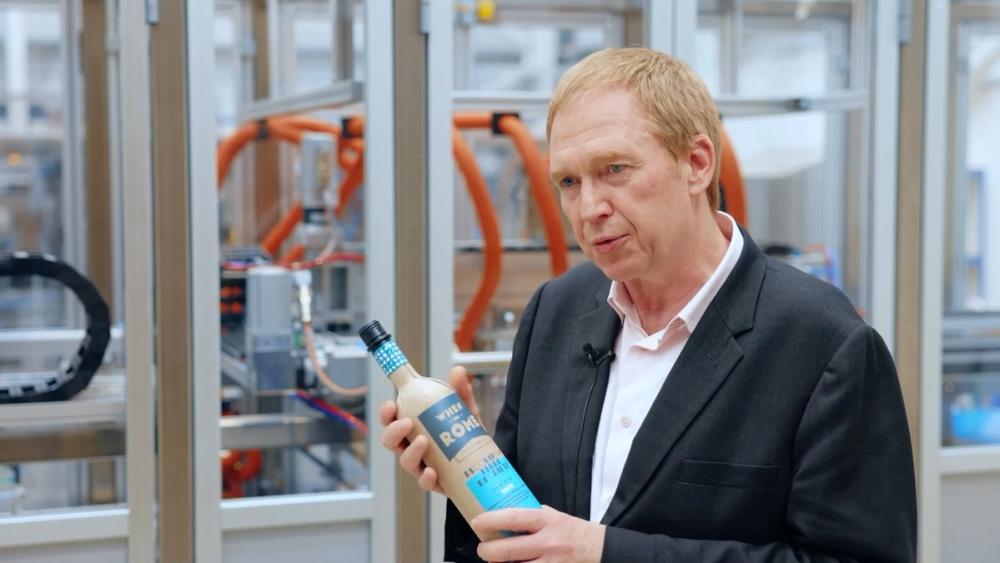
Frugalpac’s Malcolm Waugh says it has had enormous demand for its new paper bottle format
Frugalpac’s chief executive, Malcolm Waugh, points out the cost and carbon benefits of substituting glass packaging: “Every glass bottle created will put on average 466 grams of carbon into the atmosphere and the same when recycled. Clearly the cost of running the furnaces and shipping heavy weight glass is significantly increasing so alternative formats ultimately become the solution for lower carbon and lower cost.”
That is not to say there is no place for glass altogether in wine’s future. Andrew Ingham, founder of Interpunkt Wines, who has created a brand specifically around using the Frugalpac format, says: “Some wines are clearly suited to be in glass, premium wines that you might hold onto for some time, for aging, or for gifting, fair enough. But I don’t see any wines like that on supermarket shelves.”
Retailer pressure
This is a recurring theme in the alternative packaging movement that it is the major retailers that hold all the cards and it is up to them to take the plunge to affect change. Ingham explains: “Wine doesn’t lead, it waits. It waits for the retailers to tell them what they want, and then it responds, It’s such a shame that getting a supermarket listing is the bottleneck to innovation and change”. When asked what it would take to really shift the dial and progress things, Ingham simply states: “The answer is just to get on with it.”
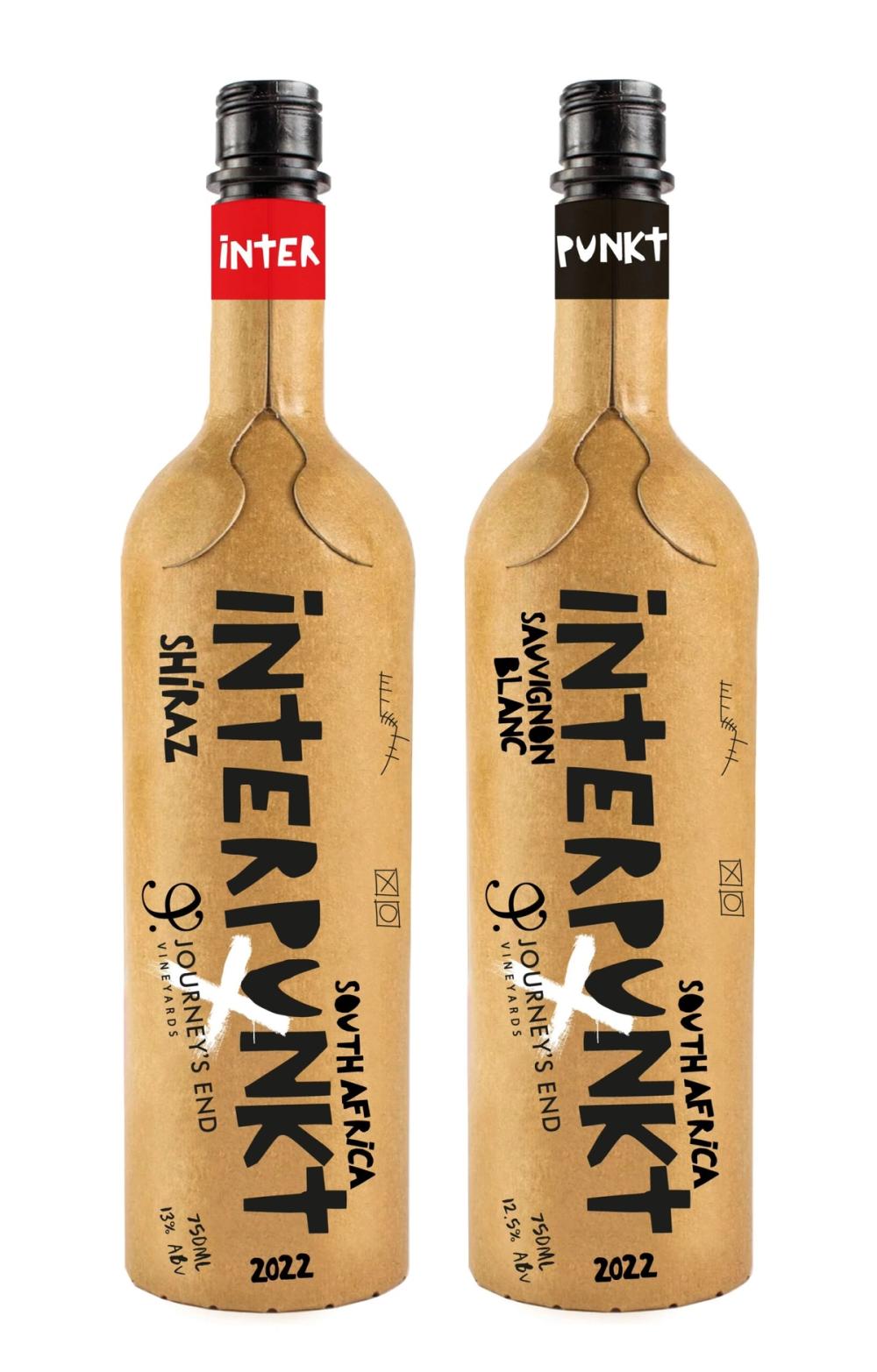
Andrew Ingham has created the Interpunkt brand based on the Frugalpac bottle
Frugalpac’s Waugh is more optimistic about the future of sustainable packaging: “We are definitely seeing a paper bottle revolution”, he claims. “The Frugal Bottle was launched in the middle of the pandemic in June 2020 and we have not looked back since. As well as enquiries to make 120 million Frugal Bottles, Frugalpac also has strong enquiries from more than a 100 other international brands, contract packing and packaging companies to buy Frugal Bottle Assembly Machines. Each machine will be able to produce 2.5m Frugal Bottles a year.”
Incentivising change
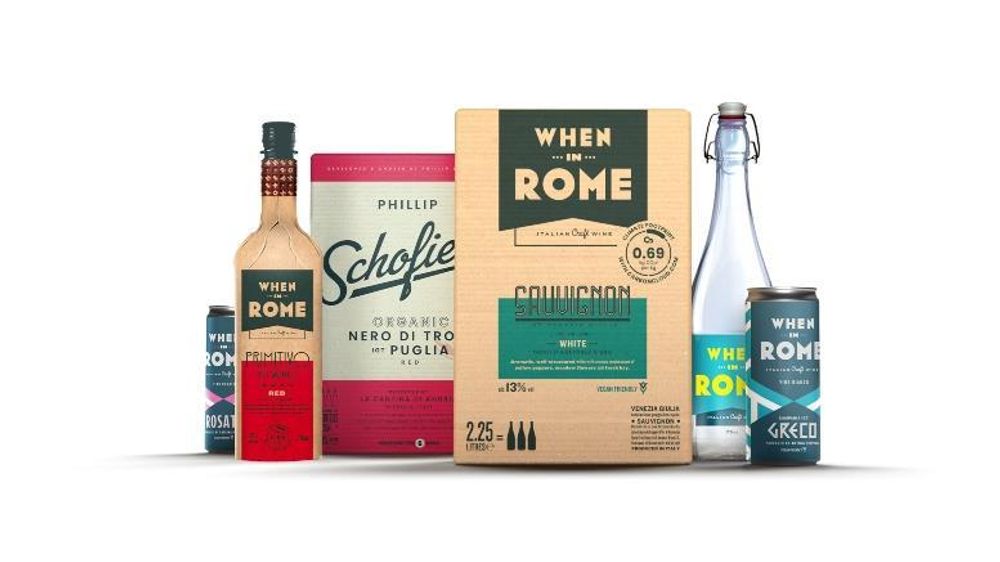
When in Rome has based its brand on alternative packaging
Rob Malin, co-founder and chief executive of When In Rome Wines, that launched its brand in bag in box packaging,believes having fixed targets will play a key role for producers and retailers to get on-board:“Grocery multiples are under pressure to reduce their Scope 3 carbon emissions and alternative format packaging is an easy way to use the wine aisle to help them achieve their targets.”
Ingham agrees: “It’s mission critical now. The industry can choose to delay it or ignore it if they like, but customers and consumers will leave wine behind more than they are already doing. The industry as a whole has this tone that we are ‘working towards’ sustainability, but in reality it’s not quick enough for my liking. There are great things happening in wineries and vineyards, but then ignored when it comes to shipping and importantly packaging. There are solutions out there now, off the shelf packaging that would make a difference, I would encourage all wineries that want to be taken seriously to do something about the problem, or get left behind.”
But how likely are consumers to break out of their ingrained culture and reach for recycled paper packaging over their beloved Burgundy-shaped bottles? What will it take for consumers to choose wines based on carbon footprints rather than the liquid itself?
Waugh explains:“The liquid must deliver to the consumers needs in any event, the package should enhance the experience and not be the reason to purchase, saving millions of tonnes of carbon should be compelling enough but not if the liquid fails to deliver. Scale and availability is the key tosuccess. A Frugal bottle looks and works like a glass bottle it’s just safer, lighter, more fun and substantially better for the environment.”
So if the liquid is to, rightly, remain paramount, do we need ultra premium wine brands to set an example, if consumers are really going to change their behaviour? Is it up to higher quality wine brands to branch out and offer, for example, a bag in box alternative to buy?
Time for cans?
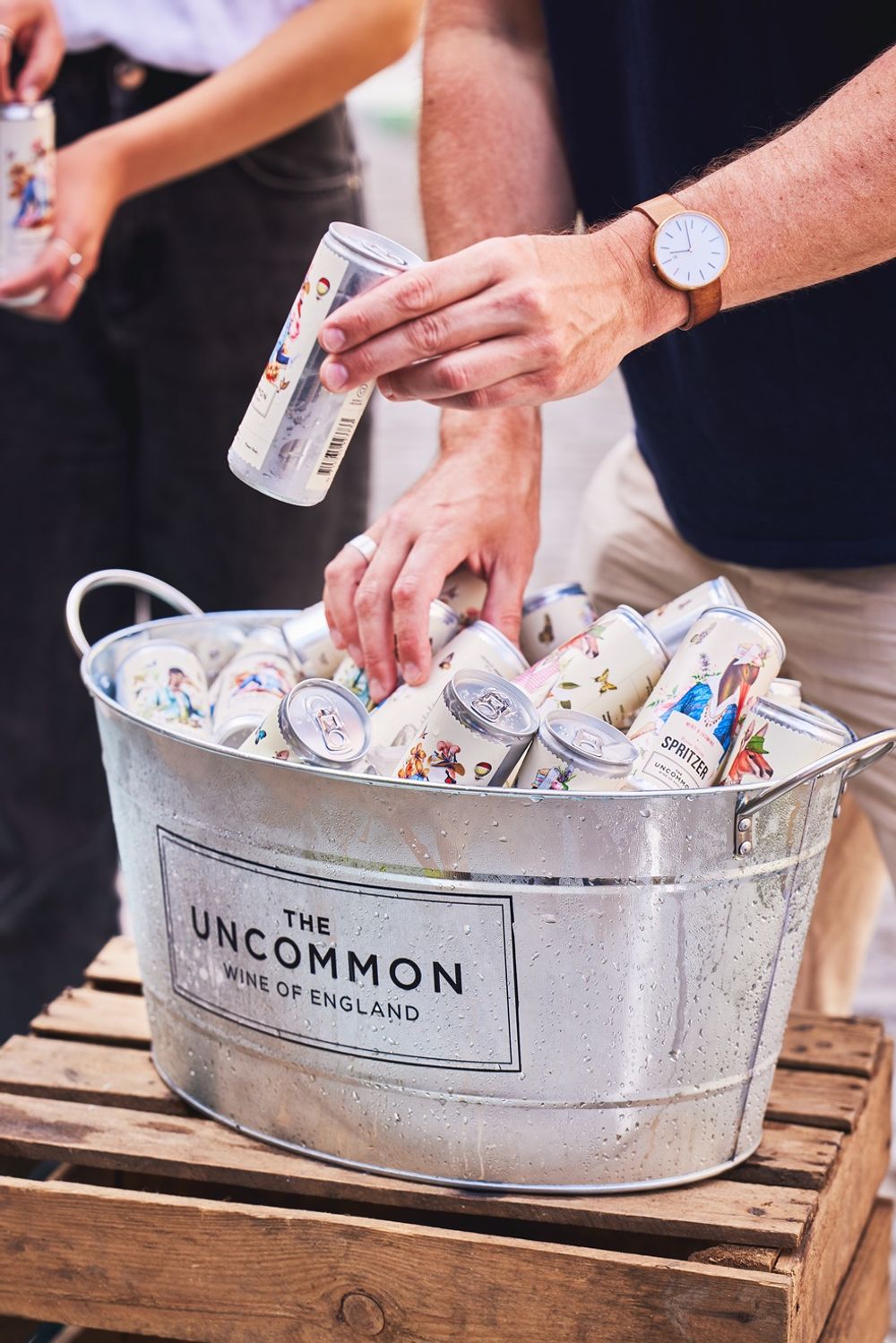
The Uncommon is one of a number of premium wine canned brands that are offering a new format for bars and restaurants
Recycled paperboard and bag in box are not the only ways to go, with canned wines gaining popularity in recent years as retailers embrace the RTD format beyond picnic season. The canned wine sector was given a major boost when Waitrose announced it was to switch all its 187ml glass bottles over to cans. A move that actually saw an increase in sales as well as reportedly saving over 300 tonnes of glass packaging.
Henry Connell, co-founder of canned wine brand, The Uncommon, claims 79% of CO2 emissions could be cut from switching a 75cl glass bottle to three 250ml aluminium cans.“Cans are better for the environment but also better for the liquid as it doesn’t let air or light in – a wine’s worst enemy.”
But he also appreciates it will take time for the culture around wine to change. “The trade has designed its service around the pour from a bottle. Somehow wine clings to tradition. This is starting to shift. The Uncommon cans are now listed at Berners Tavern alongside the finest sparkling wines in England. The format doesn’t change the taste but there is still a lot of work to do with consumer perception.”
Carbon Calories
One of the main attractions of wine is its global appeal and how we can understand a country, or region’s climatic differences through the wines it makes. But with ‘buying local’ much more of a focal point for consumers, retailers and restaurateurs, where does wine sit within this cultural and environmental shift? Will we start to count our carbon calories in the same way we do our food calories on products and menus?
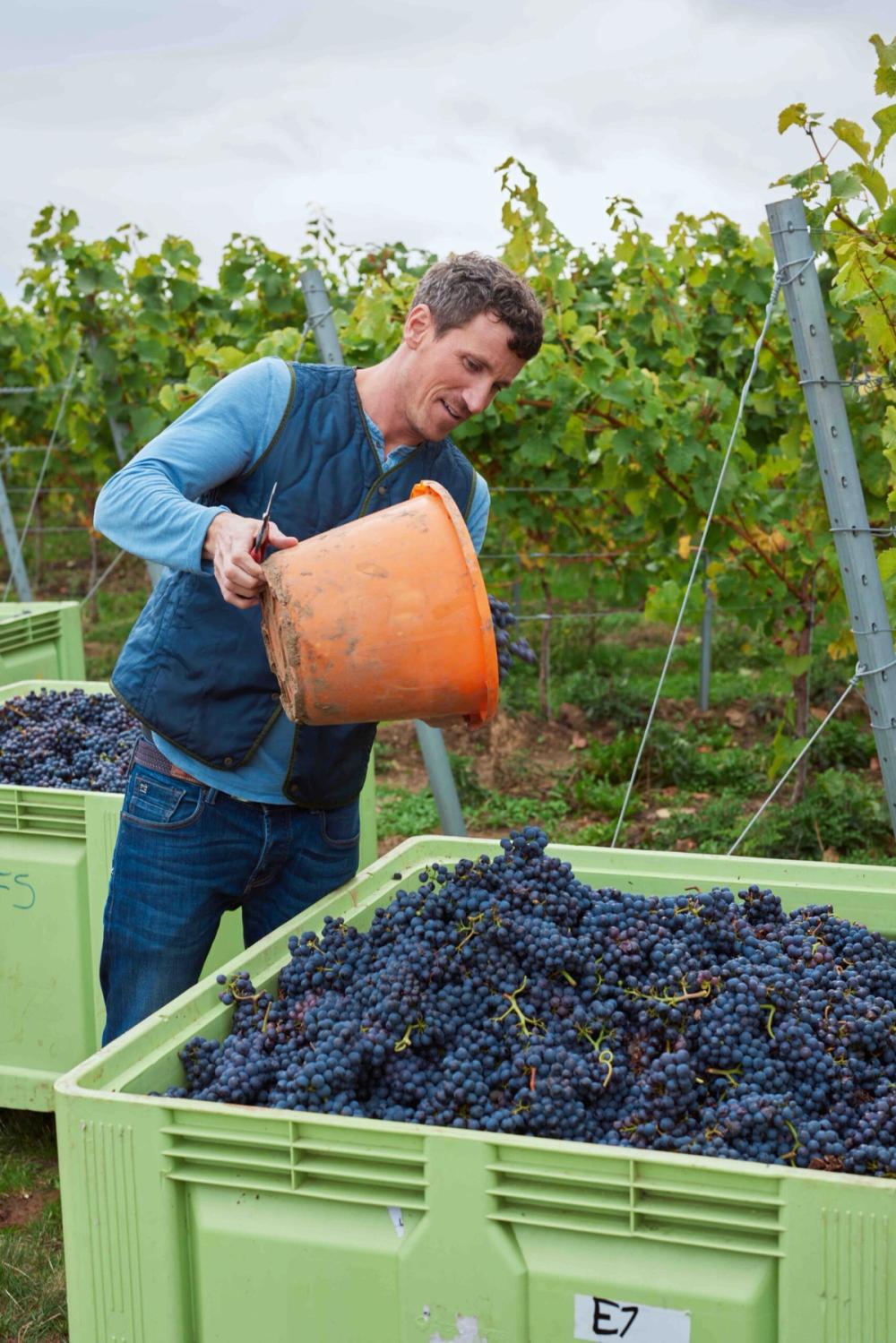
Henry Connell says its Uncommon brand also hopes to tap into the consumer’s increased demand for local products by only working with English wine
Connell asks:“Would you rather have a New Zealand Sauvignon Blanc shipped 12,000 miles, or Bacchus – the UK’s answer to Sauvignon Blanc – from 12 miles away?”
When asked what will it take for consumers to eventually choose wines based on carbon footprints rather than the liquid itself, Malin adds: “We’d love this, but it is difficult to see it happening without actual carbon-based taxation, or a similar government policy that encourages consumers to make choices based on ‘carbon calories’.”
Could the decision of what you choose to drink become an ethical one rather than an oenological one?
Drafted in
Another solution is wine on tap, which is becoming a common sight in the on-trade, particularly in high-turnover venues. Bampfield hopes it continues to catch on: “My own personal wish iswe see more wine on draft. Wetherspoons already leads on this and, as others follow, this should become much more acceptable to the public. The great advantage of draft is the emphasis is on reuse rather than recycling – the latter is preferable to waste, of course, but is by no means the ideal solution.”
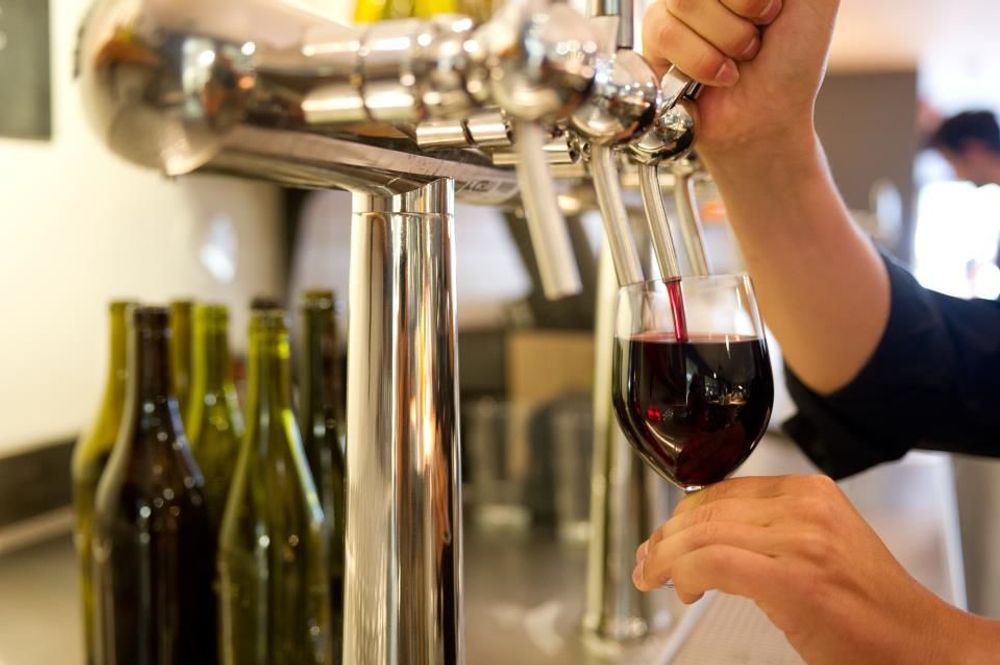
Wine on tap is becoming a common feature in the on-trade, particularly in busy pubs, but also in a number of wine bars such as Vinoteca
As long as the wine is hermetically sealed and free from unwanted oxygenation, there is much to be gained from changing the service formats of wine in both the on and off-trade. The challenge is keeping the sense of theatre and the act of serving wine that we are all so used to.
So whilst there is innovation in the alternative packaging movement, and some impetus with the cost of living crisis, there is also work to be done on the incumbent systems in glass manufacturing. Running more glass factories on renewables rather than fossil fuels is an obvious one, but we are yet to see much beyond a small handful of companies actually doing this at scale. As Bampfield points out: “We need to look at reducing the weight of glass bottles; right-weighting as opposed to light-weighting, as the glass industry likes to say.”
As consumers increasingly look to play their part in tackling their personal carbon footprints it is essential the industry as a whole takes the necessary steps to help by providing them with ever more sustainable packaging solutions that embrace and promote all formats.
- The Buyer’s Richard Siddle will be hosting a panel debate with leading alternative packaging players on what they see as the potential and opportunities for the sector at the London Wine Fair at 11.30am on May 16.









































